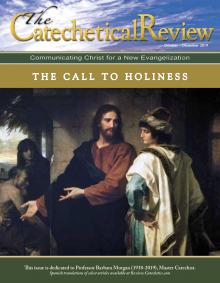We are living through a remarkable social revolution in the area of gender and sexuality, one that would have been very difficult to foresee thirty years ago. In the 1980’s, it was taken for granted that in athletic competitions, men competed with men and women with women. Various communist regimes at the time were under continuous suspicion of entering biological males into international or even Olympic women’s competitions. There was a universal consensus that this was unethical. Now, thirty or more years later, three female high school athletes in Connecticut have filed a federal discrimination complaint against the state’s interscholastic athletic association, which allows biological males who “identify” as females to compete in female athletic competitions. Unsurprisingly, these males are winning competitions and ousting female athletes from awards and scholarship opportunities.
What are we to make of these ideas that one can be a “woman” trapped in a man’s body, that one’s gender identity is fluid and not necessarily attached to one’s biological reality? Philosophy, psychology, biology, sociology, and other disciplines all have a contribution to make to this discussion; but in this article, I will be exploring what light the Scriptures have to shed on the issue.
The Goodness of Difference
“Let’s start at the very beginning, a very good place to start,” in the words of Maria von Trapp in The Sound of Music. Sexual difference is introduced into the biblical story line from the very first chapter. We read in Genesis 1:1-2: “In the beginning God created the heavens and the earth. The earth was without form and void, and darkness was upon the face of the deep; and the Spirit of God was moving over the face of the waters.” In Hebrew, the phrase translated “without form and void”, is tohu wabohu, a Hebrew phrase referring to a kind of chaotic state, where things are not distinguishable from one another, either through destruction or—in this case—because they have not yet been shaped. It is noteworthy that in what follows, God shapes the world typically by making distinctions and separating one thing from another. By doing so, different creatures and aspects of creation become identifiable. It is, after all, distinctions that create identity. If there are no distinctions between one thing and another, it is difficult to tell them apart, and if there were absolutely no distinctions, the two would necessarily be one and the same.
So, we read that God “separated the light from the darkness,” enabling both the light and the darkness to be identified, and then given the names of Day and Night.
Likewise, God makes a “firmament” to “separate the waters from the waters,” creating the sea, the sky, and the clouds. Later he makes the heavenly bodies to distinguish the passage of time, enabling the days, months, and years to be identified, and “separating the light from the darkness.” Finally, he makes man, and separates man into two sexes: “So God created man in his own image, in the image of God he created him; male and female he created them. And God blessed them, and God said to them, ‘Be fruitful and multiply …’” (Gen 1:27-28). Here we see that there is a certain unity between male and female in that both together make up “man” that is in the image of God. And yet there is a distinction between them too: they constitute a “them” in two parts. Finally, we see that the maleness and femaleness of man is directly related to the very first command God ever gives to humanity, “Be fruitful and multiply,” which can only happen when male and female unite as one. Many principles are entailed in these two verses: male and female are both good. They are integral to man’s imaging of God. Both are necessary for the fulfillment of the vocation that God has given humanity. The account of the creation of man concludes with the statement, “God saw everything that he had made, and behold, it was very good” (Gen 1:31). This includes the distinction between male and female, as well as all the other distinctions God has introduced into creation in order to create different identifiable creatures: the distinction between light and dark, day and night, sea and sky, one kind of animal from another kind, man from the animals, male from female. All these distinctions are good and given by God, not by creatures themselves. Yet, we see throughout the Bible that the forces of evil—and the Evil One—are intent on undoing the God-given distinctions and returning the world to an undifferentiated chaos. Evil rejects the goodness of distinctions God has introduced, starting with the most fundamental distinction—that between Creator and creature—but continuing down the line with the other distinctions as well.
The rest of this online article is available for current Guild members.
This article is from The Catechetical Review (Online Edition ISSN 2379-6324) and may be copied for catechetical purposes only. It may not be reprinted in another published work without the permission of The Catechetical Review by contacting [email protected]


















